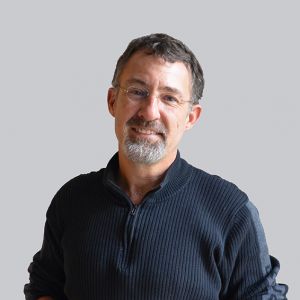I am fortunate to have spent the past weekend at the bi-annual conference of the International Federation of Hospital Engineers (IFHE), in conjunction with the annual meeting for the NVTG (the Netherlands equivalent of the American Society for Healthcare Engineering).
The meetings have been interesting for many reasons. First, the IFHE has not been a force in US Healthcare up until now. The Health Care Institute (HCI), on whose board I serve, is now the organization that is connecting us to the rest of the world. The IFHE has new leadership, including a President from the Netherlands, Douwe Kiestra, and a Vice President from Australia, Darryl Pitcher. These guys are the real thing, and I believe that they will make good things happen for the international healthcare engineering community, including engineers here. In fact, I believe this so strongly that, when they asked me to join them on their Executive Committee, I readily agreed.
On Saturday, I met with the Americas section of the IFHE. They asked me to present developments in regulations, ASHRAE standards, sustainability, and especially, benchmarking in the US. I am embarrassed to say I was one of only two people who did not speak Spanish, so I think I missed most of what seemed to be a very robust conversation. (I learned Spanish decades ago as a boy in Texas, but long ago forgot it – have just downloaded Duolingo and started to learn – gracias!). But, they were very interested to hear, in particular, about the ASHE Energy to Care Program.

The IFHE and the HCI are currently working together to create an update to a global Health Industry Greenhouse Gas Inventory, which will help to benchmark global healthcare energy consumption as well. The HCI and IFHE have both done some initial work on the issue of benchmarking in general, but this is a large elephant to eat. We are now talking about a first global bite of greenhouse gas emissions.
A second major initiative of the IFHE will be in the area of ventilation standards. Each annual meeting includes a presentation by each country on significant work. This year, we had the largest gathering in IFHE history–more than 60 people from (I think) 35 countries. As we went around the room talking about progress, I was amazed at the number of countries who are working on the issue of ventilating healthcare spaces. All of us are dealing with the same issues, and many countries have made significant progress. The IFHE will be gathering this work, and, true to its mission, publishing the best thinking from the worlds’ healthcare engineering community.
A couple of weeks ago, I wrote about an effort to start to gather data in this effort, and the IFHE members agreed to also recruit hospitals from around the world to participate. For a long time, we have struggled to find evidence that would help us know how to improve healthcare ventilation standards; I hope that this new energy (pun intended) from the IFHE will help us learn more.
Here are a couple of other observations that I thought may be worth passing along:
We are all dealing with the same issues:
- Protecting against infections.
- Technology making new ways of delivering healthcare possible.
- Business Continuity Planning.
- Energy reduction.
- Aging populations.
- Lifestyle diseases.
- Grappling with limited resources, with health systems seeming to verge towards a blend of governmental and privately owned and operated organizations.
How do we benchmark to know we are on track?
One speaker on the future of healthcare predicted the return of two-bed rooms; however, the second bed is not for a second patient, but for the family who is there to help in the delivery of care, to help with shortages of nurses.
The people of the Netherlands are incredible–they have been fighting rising seas for centuries. They are the best at it. They are also on the front lines of climate change as a result, racing to build better defenses even as sea levels rise. One person we talked to remembers skating on the canals as a child. But, the canals no longer freeze. As we flew away from the coast, we saw dozens of off-shore windmills generating electricity for the country.
During my presentations, I asked everyone about the ICC – International Construction Code. Nobody had even heard of it–made me wonder about the international aspirations of many of these things. In fact, it was interesting that the country of the Netherlands is planning to create a green building standard, which it thinks it can export to other countries. It amazes me how many different organizations insist on creating their own competing versions of the various guides and standards and trying to out-compete the others.
Everyone in the Netherlands rides bikes. Navigating an intersection is somewhat tricky – there are lanes for walkers, riders, and drivers. There are signals for all three. They interlace left turns and other things. Bikers must stop back far enough to yield to (other) bikers and walkers going perpendicular to you. It is very complicated. Someone told us there were five bikes for every person in the Netherlands. While this may be an exaggeration, there sure were a lot – ridden by people of all ages and walks of life. And, there were very very few people who were overweight.
Less waste in the Netherlands. They don’t have toilet seat covers. Instead, they have a cleaning spray, and ask people to use toilet paper to clean the seats. It’s to keep the effluent cleaner. Many bathrooms have cloth towels hanging next to the sink. And in coffee shops, you won’t find disposable straws or sticks, rather, cleanable stainless steel spoons.
I had dinner one night with the delegates from Mexico. In Mexico, they are really struggling with the single-bed room requirement. Apparently, their government requires single-bed rooms. The problem is, they have such demand for beds already that they would have to turn away so many people if they remodeled their buildings to split their 4-bed wards into single bed rooms. So, they largely ignore the regulations. Some of their doctors want at least two beds per room, in order to provide social connections; something we are seeing, of course, in many other places.
What was most impressive to me was the good will and fellowship of the attendees. This is a group of people who have no agenda other than to improve the profession. As I humbly take my place on the Executive Committee of the organization, I hope that we will.
I made a second presentation on Monday to the affiliated conference of NVTG. I talked about the book I have been working on for the World Health Organization (WHO), “Health in the Green Economy”. This book is a series of prescriptions for the healthcare industry’s response to climate challenges–prescriptions that are aimed at both improving the environment and in producing health co-benefits. In closing that talk, I noted that the global healthcare industry is now more than 10% of the global economy, with an outsized environmental impact relative to its physical size. So, the facility operators of this industry have an opportunity to do something important. If we come together, we can show the world what we are doing, and how it can be done. The world needs us to do this. The IFHE is the vehicle that has the potential to make it happen.
All of us face challenges, of course, but as the saying goes, “you can curse the darkness or you can light a candle”. (People around me know I refer to this often.) But it has a special meaning in the Hague. In the Hague, there is a special international institution called the Peace Palace. It is an old and venerated set of institutions aimed at helping to resolve disputes and to bring people together. In front is an eternal flame. This flame was created when flames from each continent on the earth were brought together and merged into the single flame of peace.
Like the Eternal Flame, the IFHE truly represents the flames from the hospital engineering communities from all of the countries of the world joining together into a single flame that will help light the way to a better, healthier, more sustainable future. I am proud and humbled to be part of it.

Interested in what you see? Subscribe to receive monthly news and information
more tailored to what you need.

